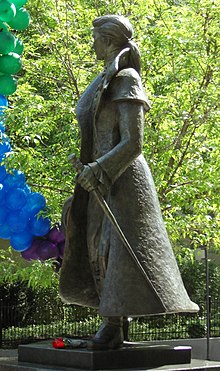
Church and Wellesley is an LGBT-oriented enclave in Toronto, Ontario, Canada. It is roughly bounded by Gerrard Street to the south, Yonge Street to the west, Charles Street to the north, and Jarvis Street to the east, with the core commercial strip located along Church Street from Wellesley south to Alexander. Though some LGBT-oriented establishments can be found outside this area, the general boundaries of this village have been defined by the Gay Toronto Tourism Guild.

Davie Village is a neighbourhood in the West End of Vancouver, British Columbia, Canada. It is the home of the city's LGBT subculture, and, as such, is often considered a gay village, or gaybourhood. Davie Village is centred on Davie Street and roughly includes the area between Burrard and Jervis streets. Davie Street—and, by extension, the Village—is named in honour of A.E.B. Davie, eighth Premier of British Columbia from 1887 to 1889; A.E.B's brother Theodore was also Premier, from 1892 to 1895.
Xtra Magazine is an LGBTQ-focused digital publication and former print newspaper published by Pink Triangle Press in Toronto, Ontario, Canada. The publication is a continuation of the company's former print titles Xtra!, Xtra Ottawa, and Xtra Vancouver, which were all discontinued in 2015.

Algoma University, commonly shortened to Algoma U, is a Canadian public university in the province of Ontario, with campuses in Brampton, Sault Ste. Marie, and Timmins. Algoma U offers bachelor's degrees, master's degrees and graduate certificate programs in liberal arts, sciences and professional disciplines.
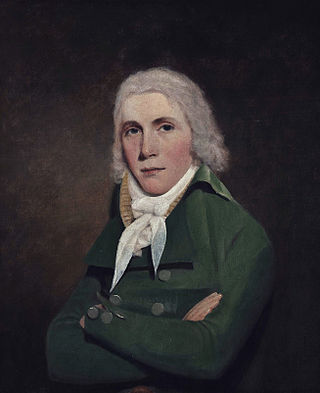
Alexander Wood was a Scottish merchant and magistrate in Upper Canada who was the centre of a sex scandal in 1810.

The Body Politic was a Canadian monthly magazine, which was published from 1971 to 1987. It was one of Canada's first significant gay publications, and played a prominent role in the development of the LGBT community in Canada.
Glad Day Bookshop is an independent bookstore and restaurant located in Toronto, Ontario, specializing in LGBT literature. Previously located above a storefront at 598A Yonge Street for much of its history, the store moved to its current location at 499 Church Street, in the heart of the city's Church and Wellesley neighbourhood, in 2016. The store's name and logo are based on a painting by William Blake.

Ottawa Capital Pride is an annual LGBT pride event, festival, and parade held in Ottawa, Ontario, Canada, and Gatineau, Quebec, from mid to late August. Established in 1986, it has evolved into a 7 to 9-day celebration of the 2SLGBTQIA+ community, advocating for equality, diversity, and inclusion in the National Capital Region. The festival offers bilingual events in English and French, known as 'Capital Pride / Fierté dans la capitale', seamlessly blending local pride with national importance.
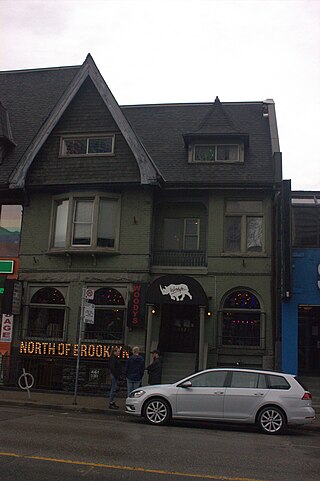
Woody's on Church is a gay bar located at 467 Church Street at the gay village in Toronto, Ontario, Canada.
This is a timeline of notable events in the history of the lesbian, gay, bisexual and transgender (LGBT) community in Canada. For a broad overview of LGBT history in Canada see LGBT history in Canada.

Shingwauk Kinoomaage Gamig is an Indigenous led institute, with Algoma University in Sault Ste. Marie as one of its main partners. Shingwauk Kinoomaage Gamig is one of nine Indigenous Institutes in Ontario's post-secondary system and collaborates with other colleges and universities to offer post-secondary programs geared specifically toward Indigenous students.

Queers Against Israeli Apartheid (QuAIA) was a Toronto-based grassroots organization involved in the movement against what the organization see as Israeli apartheid and is a member of the Coalition Against Israeli Apartheid. The group has been involved in Israeli Apartheid Week as well as Toronto Pride Week. QuAIA formed shortly after the 2008 iteration of Israeli Apartheid Week at which queer activists had a discussion about "pinkwashing", or the use of gay rights as a propaganda tool to justify Israel's policy toward Palestine. The group went on to form contingents for the 2008-2010 and 2012 Pride parades, as well as holding forums, discussion panels and cultural events in Toronto.
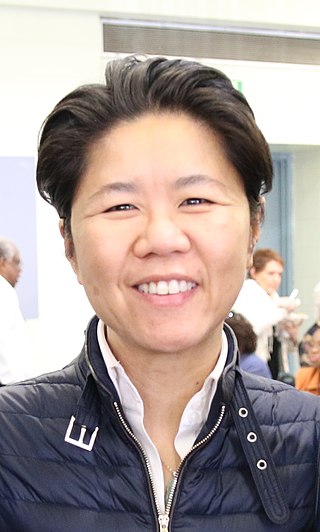
Kristyn Wong-Tam is a Canadian politician who has represented Toronto Centre in the Legislative Assembly of Ontario since 2022 as a member of the Ontario New Democratic Party (NDP).
The Lesbian Gay Bi Trans Youth Line , founded in 1994, is a peer support organization for LGBT youth across the province of Ontario. Although originally known for their phone support line, the organization also offers online chat, SMS and e-mail support services, as well as promoting and supporting other events and programs for 2SLGBTQ+ youth.

Pride House is a dedicated temporary location which plays host to lesbian, gay, bisexual and transgender (LGBT) athletes, volunteers and visitors attending the Olympics, Paralympics or other international sporting event in the host city. The first was organized for the Vancouver 2010 Winter Olympics.
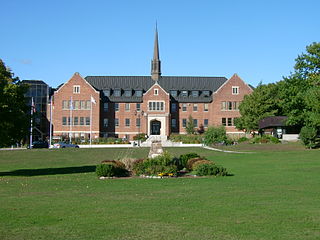
Shingwauk Indian Residential School was a Canadian residential school for First Nations, Métis, and Inuit children that operated in Canada between 1873 and 1970 in Sault Ste. Marie, Ontario, by the Anglican Church of Canada and the Government of Canada.

The Children of Shingwauk Alumni Association (CSAA) is a grassroots, community based intergenerational residential school survivor organization based in Sault Ste Marie, Ontario.
Robert Delford Newbigging (1934–2012) was a Canadian artist, visual arts teacher, children's author, whose bronze-fashioned works have been showcased in art galleries across Europe and North America. Newbigging is best known for facilitating the project concept, development and creation of Toronto's Alexander Wood statue.
A number of monuments and memorials in Canada were removed or destroyed as a result of protests and riots between 2020 and 2022. These included six sculptures of Sir John A. Macdonald, the first prime minister of Canada, three of other figures connected to the Canadian Indian residential school system, two of Canadian monarchs, one of the British explorer Captain James Cook and one of John Deighton, a bar-owner whose nickname inspired the name of Vancouver's Gastown district.



